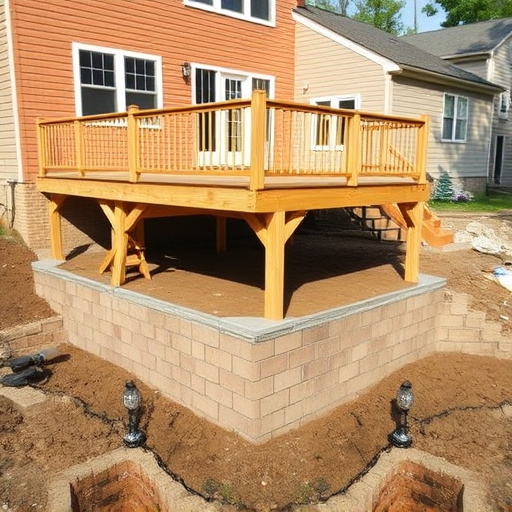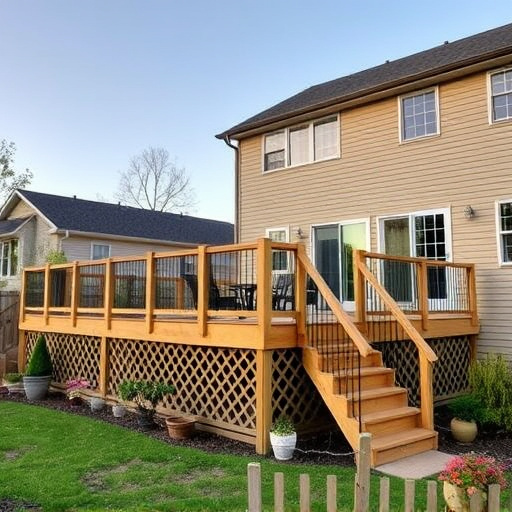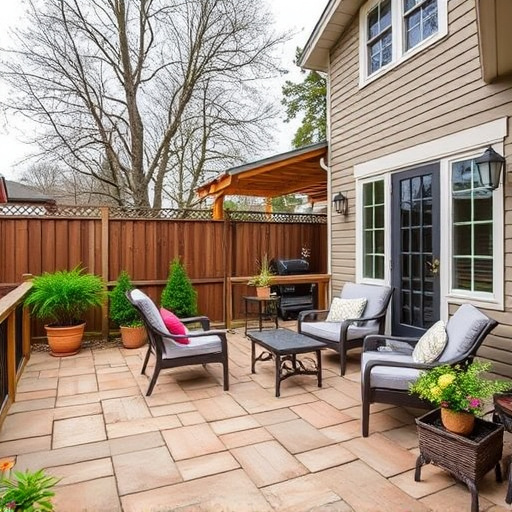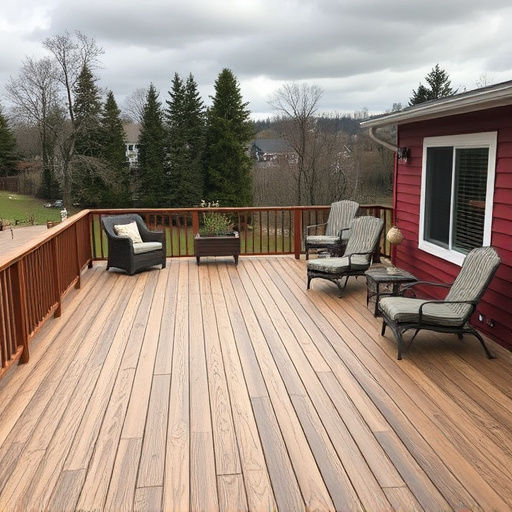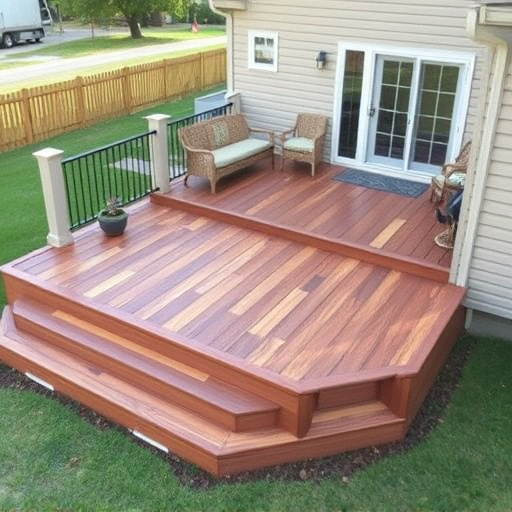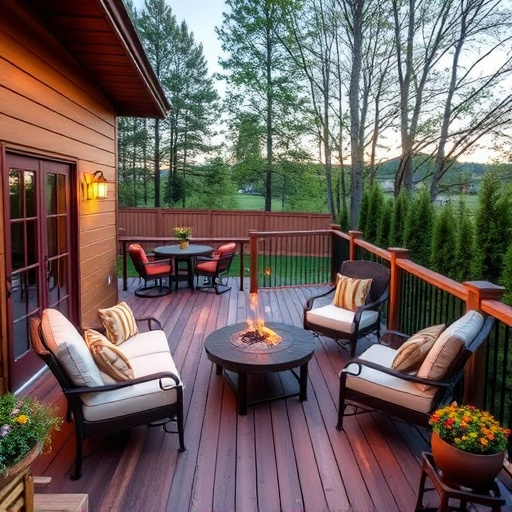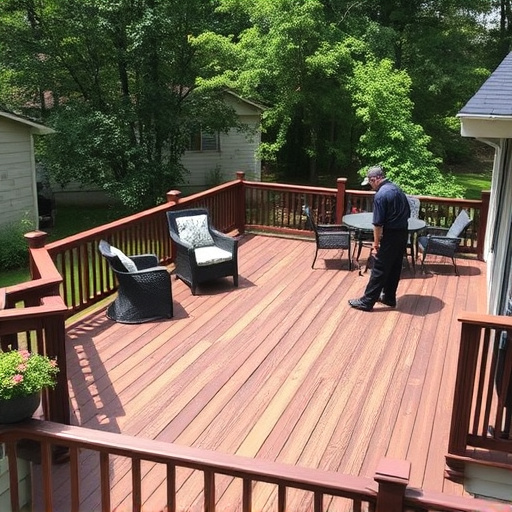Before repairing a deck railing, assess damage including broken sections, rot, and storm damage. Gather materials based on repair complexity: basic for minor issues, specialized for extensive rot or structural damage. For severe damage, replace rail; for minor damages, remove, clean, patch, and secure. Always ensure level, secure fastenings for safety. Properly reinforce with brackets, vertical posts, and protective coatings. Regular cleaning and re-sealing prevent costly replacements.
Damaged deck railings not only pose a safety hazard but also detract from your outdoor space. This quick guide walks you through repairing a deck railing efficiently, step by step. First, assess the damage and gather materials suitable for replacement or repair of individual rails. Next, reinforce and finish the railing to ensure longevity and maintain a safe, appealing deck.
- Assess Damage and Gather Materials
- Replace or Repair Individual Rails
- Reinforce and Finish for Longevity
Assess Damage and Gather Materials

Before repairing any deck railing, it’s crucial to assess the extent of the damage. Start by inspecting the entire length of the railing for broken or missing sections, rot, or loose connections. Look for signs of storm damage repair needed due to high winds or falling debris, as these can often leave telltale marks on residential roofing and siding replacement is sometimes necessary. Take note of any areas that seem unstable or require immediate attention.
Gather materials based on your findings. For minor repairs like replacing a few boards or securing loose posts, you might only need new decking material, screws, and a drill. More complex situations, such as extensive rot or structural damage, will likely require specialized tools and possibly new railings to ensure safety and stability. Having the right supplies on hand will help you tackle the project quickly and efficiently.
Replace or Repair Individual Rails

When it comes to repairing a damaged deck railing, one of the most common tasks is replacing or fixing individual rails. This can be an effective way to quickly restore the safety and aesthetics of your outdoor space. First, assess the extent of the damage. If a rail is severely cracked, broken, or missing, replacement may be the best option. You’ll need to measure the length of the damaged section and procure a new rail that matches your existing ones in size, material, and style.
For minor damages like splinters, cracks, or loose connections, repairing individual rails is often more feasible. This usually involves removing the damaged portion, cleaning the cut ends, and securing a patch or new piece using appropriate fasteners. Consider using exterior-grade wood putty to fill in any gaps or cracks for a seamless finish. Once the repair is complete, ensure all components are securely fastened and level for optimal safety and stability, much like how you’d focus on residential siding repairs for your home’s exterior.
Reinforce and Finish for Longevity

To ensure your deck railing stands the test of time, reinforcing and finishing it properly is crucial. After repairing any damages, such as broken or missing sections, strengthening the structure with additional supports can prevent future weakness. This step is especially important for older decks or those that have endured storm damage repair. Using materials like metal brackets or vertical posts can provide extra stability and distribute weight evenly.
A well-finished deck railing not only enhances aesthetics but also prolongs its lifespan. Applying a protective coating, such as a weather-resistant paint or sealant, shields the wood from the elements, preventing rot and decay often associated with commercial roofing. Regular maintenance, including cleaning and re-sealing, is key to keeping your deck railing in top condition. This simple step can save you from costly roof replacement in the long run.
Repairing a damaged deck railing is a quick and rewarding project that can extend the life of your outdoor living space. By assessing the damage, replacing or repairing individual rails as needed, and reinforcing the structure with appropriate materials, you can achieve a sturdy and aesthetically pleasing result. With proper care and regular maintenance, your deck railing will continue to provide safety and style for years to come, enhancing the overall value of your property.

